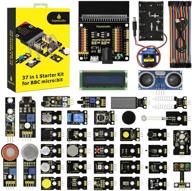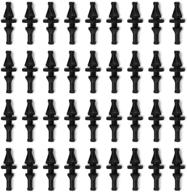
Review on ⚡️ 5V Relay Module for Arduino Raspberry Pi DSP AVR PIC ARM - JBtek 4 Channel by Ben Duncan

No documentation but otherwise solid board
1 star removed due to lack of documentation but otherwise very economical relay board. Provides optical isolation and some degree of physical isolation. I would consider this board suitable for light AC applications. The device works well with my Raspberry Pi 2 and Pi 3. Will buy more. An add-on for Pi users. When the Pi first boots up, the GPIO pins are not yet defined as outputs. The LEDs on the relay board are dim, indicating the pull-up resistors are working. However, as soon as you define the GPIO pins as outputs, the relays switch on immediately. You can disable the relay by sending the GPIO output high (GPIO.output(xx, True), where xx is the corresponding pin number). To solve these problems I decided to add inverters between the GPIO pins and the relay board. For this I chose a quad channel Schmitt NAND device with two inputs (4093B). I also added pull-up resistors (47k ohms) to the 4093B inputs because clearing the GPIO library (under Python) or turning the Pi off causes the GPIO pins to float - this causes the relay to buzz undesirably with no pull- oops You can power the 4093B from a 3.3V power supply on the Pi interface. You can probably replace 4011 quad NAND with 4093, but I haven't tried it. The picture shows my inverter board soldered directly onto the relay board. Using GPIO pins 23 through 26, the code to initialize and then turn on relays 1 and 3 would look something like this: import RPi.GPIO as GPGP.setmode(GP.BCM) GP.setup([23,24,25, 26 ] , GP.OUT)GP.output([23,24,25,26], [True, False, True, False]).to enable/disable relay 2 would be: GP.output(24, True)GP . Out (24, False).GP.cleanup()
- Computer components
- I will add later
New products
Comments (0)
Top products in 🖥️. Single Board Computers

REXQualis Comprehensive Starter Kit with Arduino MEGA 2560 & Detailed Tutorial for Arduino IDE Compatibility

11 Review

🎁 Ultimate BBC Micro bit Sensor Starter Kit: Keyestudio 37-in-1 Box with Tutorial, Compatible with V1.5 & V2, Gift for Kids and Adults (Microbit Board Not Included)

11 Review

LAFVIN Super Starter Kit for Arduino R3 Mega2560 Mega328 Nano with Detailed Tutorial - Compatible with Arduino IDE

11 Review

Vilros Raspberry Pi 4 4GB Complete Starter Kit - Black Fan-Cooled Aluminum Case for Heavy-Duty Performance

12 Review
Another interesting products

MacBook Retina 13-inch (A1425, A1502) and 🔩 15-inch (A1398) Bottom Case Screw Set with Pentalobe Screwdriver

11 Review

🖥️ Helifouner 450-Piece Computer Standoffs Spacer Screws Kit: Ideal for Hard Drive, Motherboard, Fan, Power Graphics & Computer Cases

10 Review

uxcell 3.5" HDD Screw Black 200pcs for Computer PC Case - Flat Phillips Head - 6#-32 - Hard Drive Fasteners

10 Review

36-Pack Black Rubber PC CPU/Case Fan Screws/Rivets Set for Computer

11 Review

